Episode 186: STS-101 - Screens and Stations (ISS Resupply 2A.2a)
Table of Contents
On STS-101 we’ve got a slick new cockpit to show off, a pile of launch delays, a ton or two of new equipment and supplies and some floppy disks in the payload bay. Let’s head back to the ISS!
Episode Audio #
Photos #
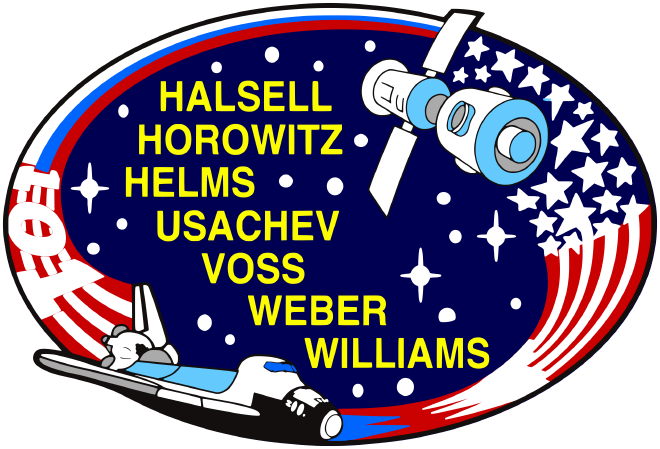
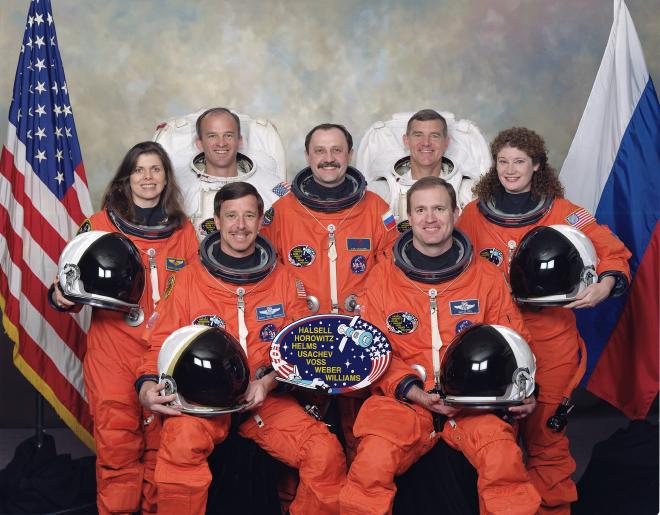
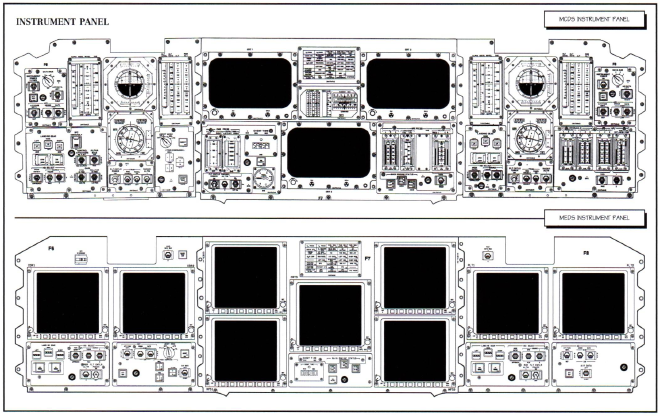
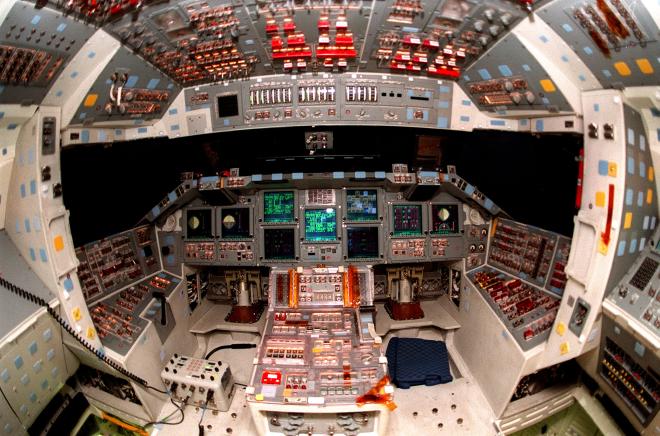
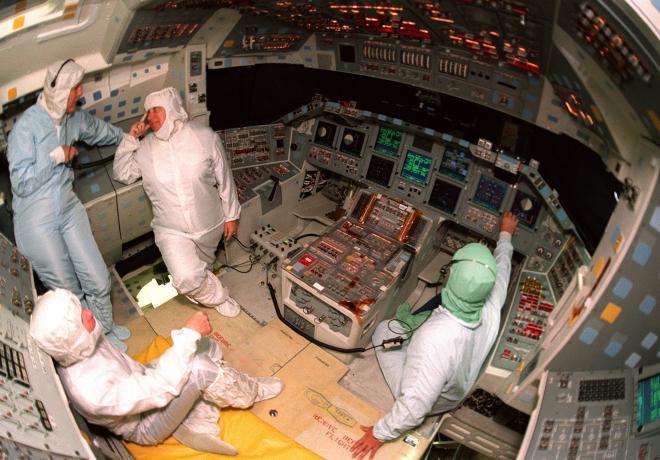
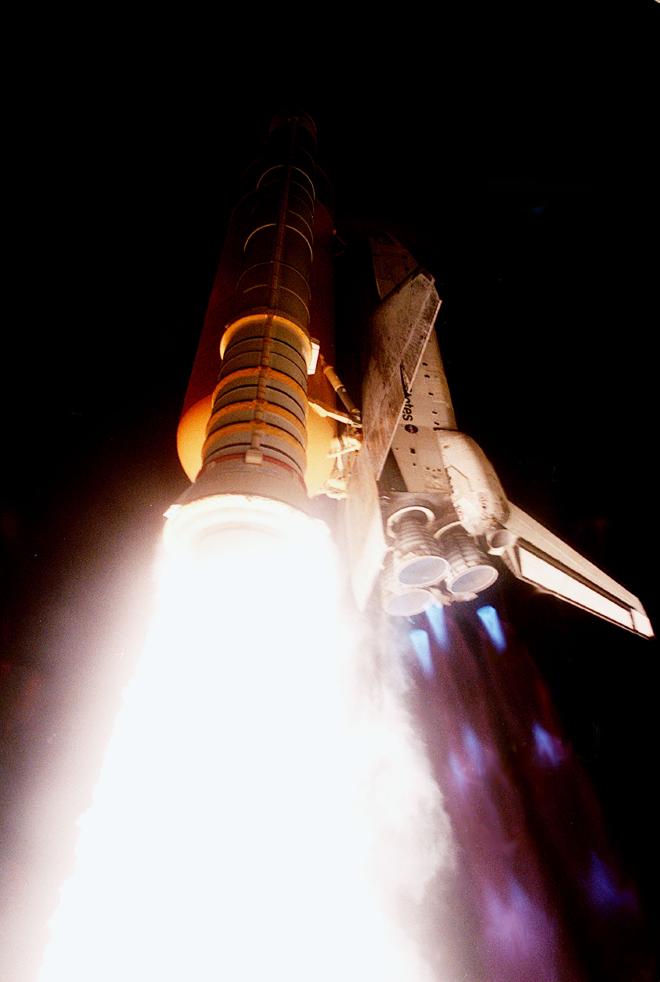
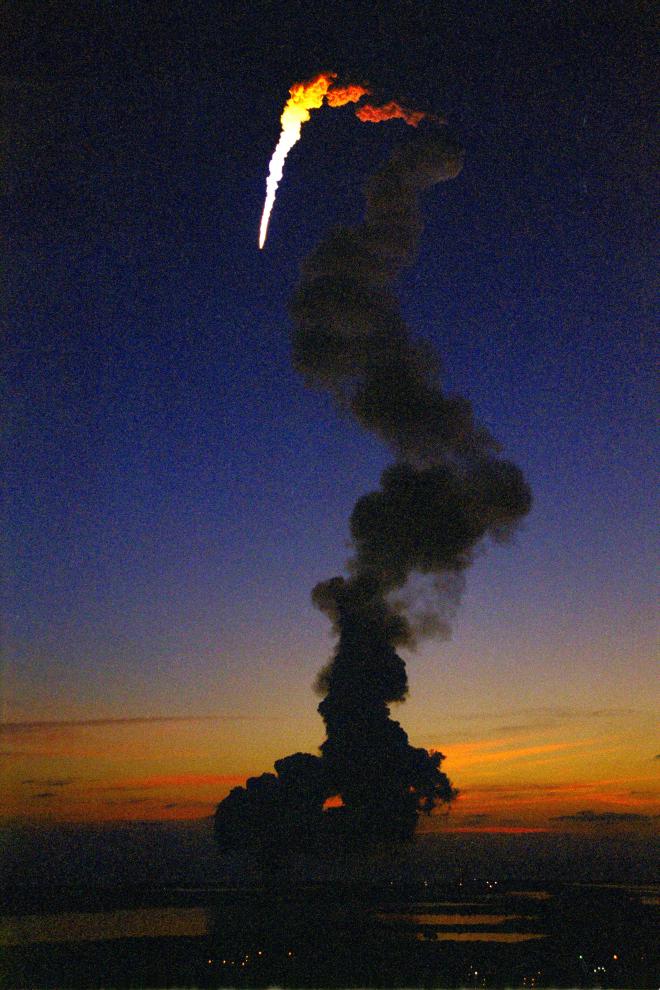
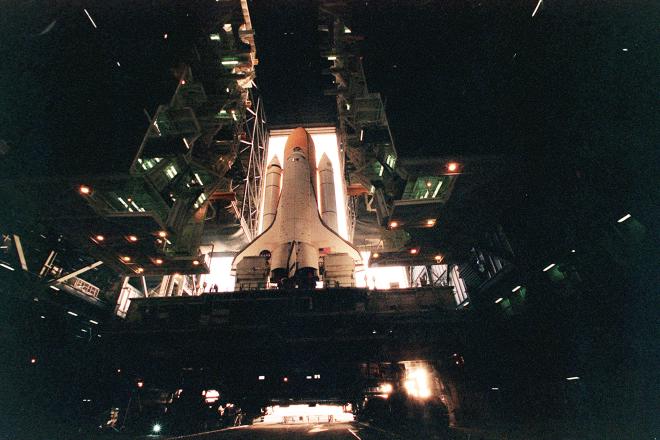
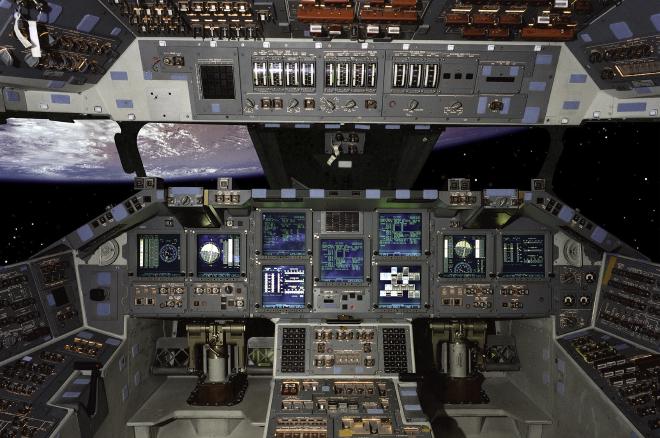
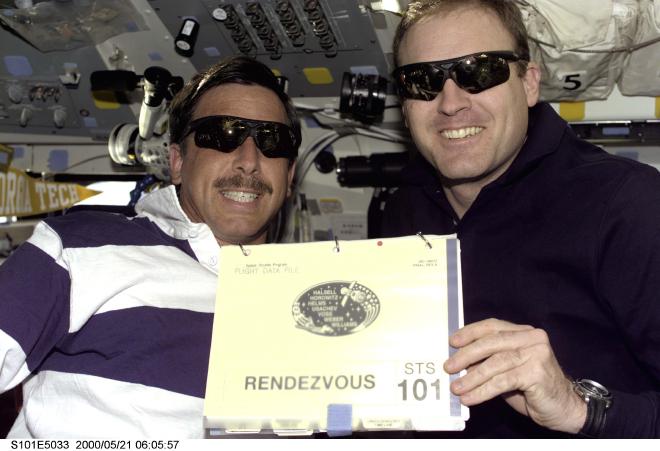
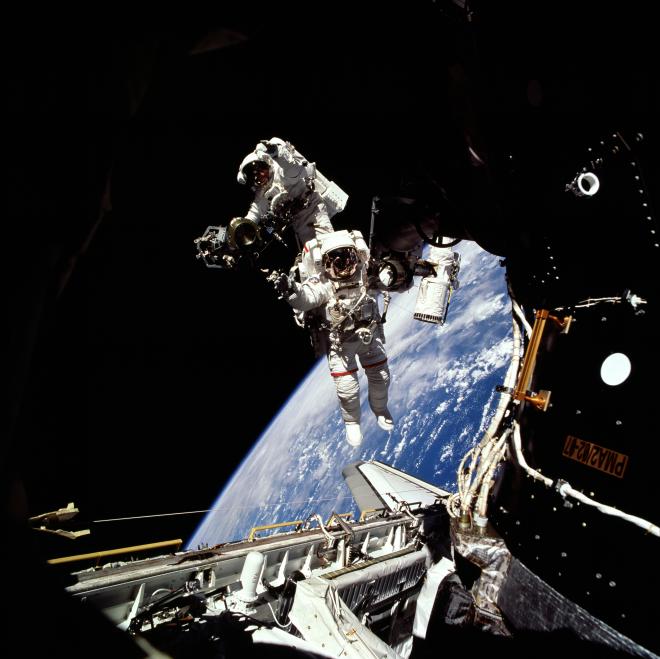
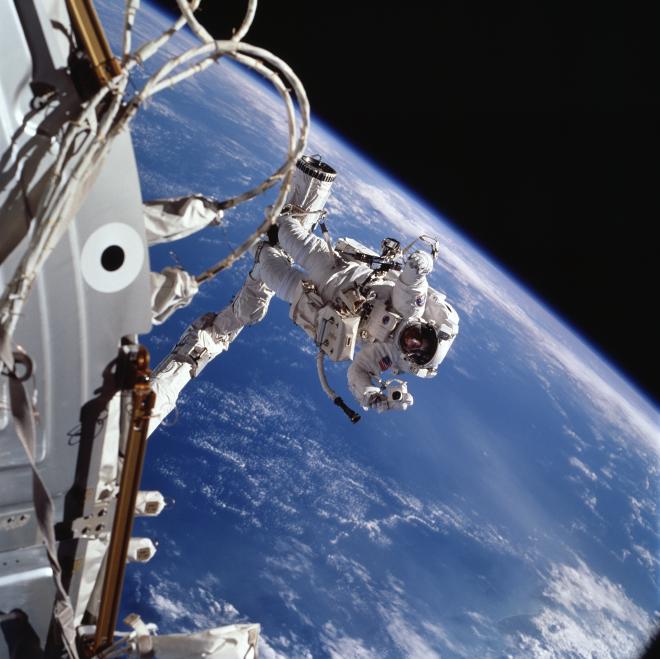
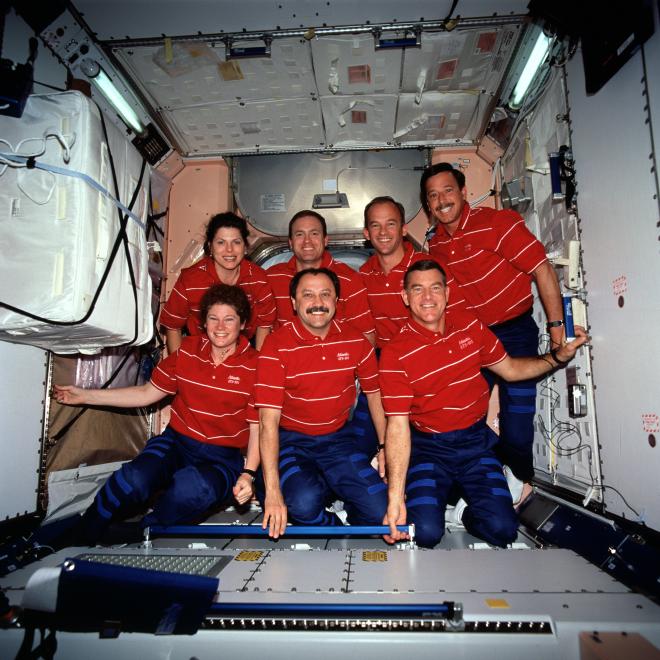
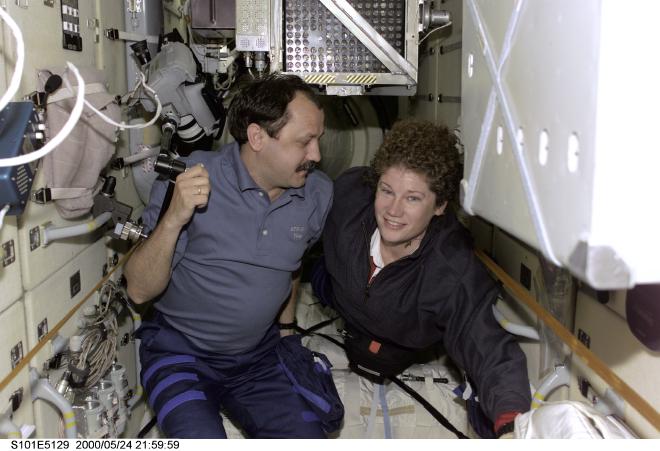
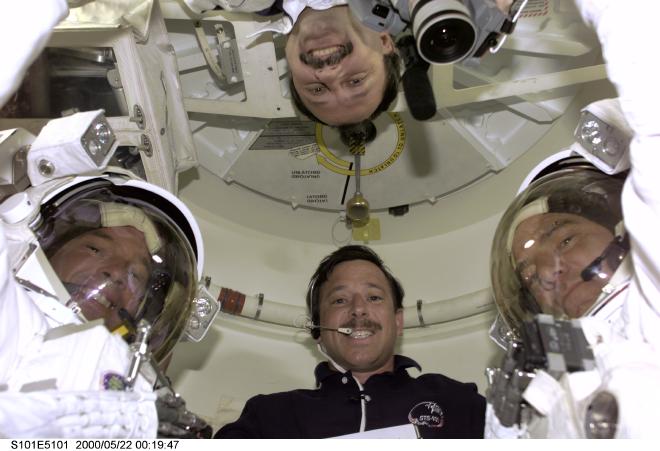
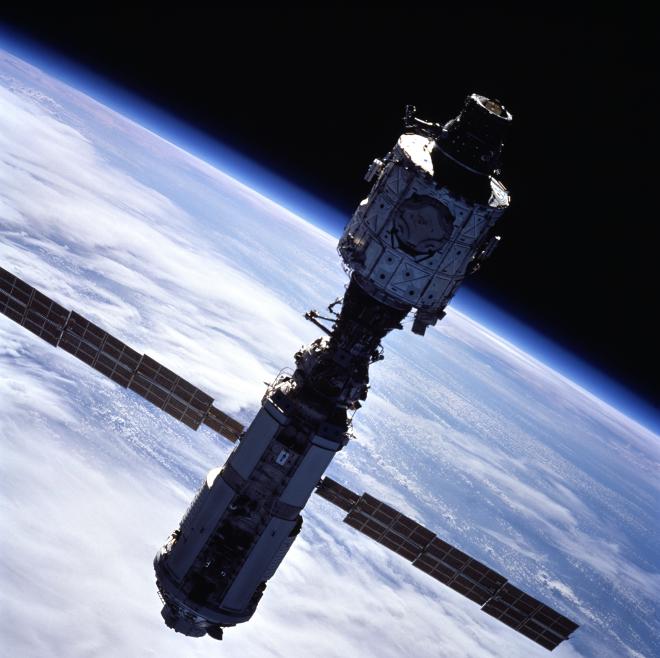
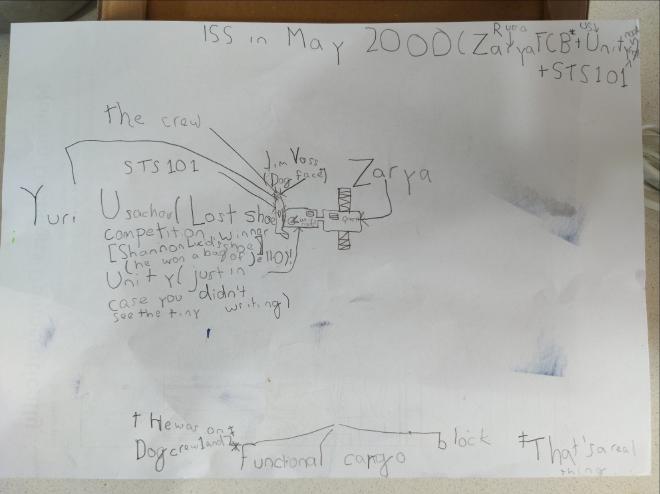
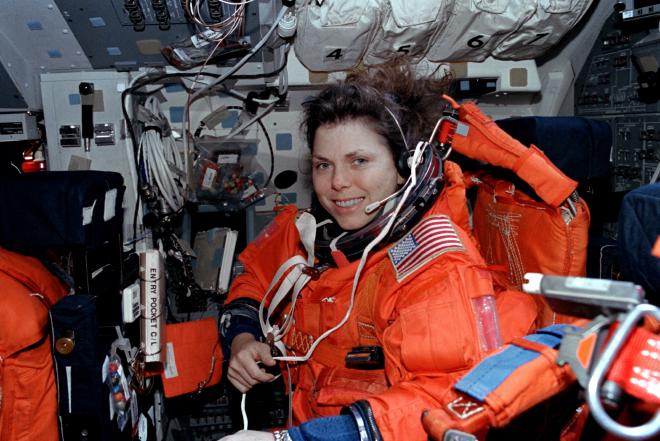
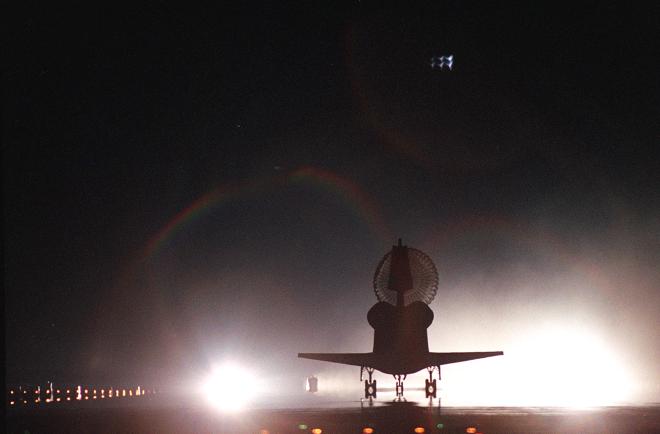
For more photos, head over to our friends at Wikiarchives.space: https://wikiarchives.space/index.php?/category/626
Post-Flight Presentation #
To see the mission in motion, check out the post-flight presentation!
Click here for full video details.
Transcript #
NOTE: This transcript was made by me just copying and pasting the script that I read to make the podcast. I often tweak the phrasing on the fly and then forget to update the script, so this is not guaranteed to align perfectly with the episode audio, but it should be pretty close. Also, since these are really only intended to be read by myself, I might use some funky punctuation to help remind myself how I want a sentence to flow, so don’t look to these as a grammar reference. If you notice any egregious transcription errors or notes to myself that I neglected to remove, feel free to let me know and I’ll fix it.
Hello, and welcome to The Space Above Us. Episode 186, Space Shuttle Flight 98, STS-101: Screens and Stations
Last time, we rode along as Space Shuttle Endeavour extended an Orbiter-sized selfie-stick and used it to map the surface of just about the entire world in 3D. Today’s mission won’t be creating any groundbreaking datasets that will be used for decades, but it will be ensuring a stable start to crewed operations on the ISS, welcoming Space Shuttle Atlantis back to operational status, as well as showing off a slick new upgrade to the Orbiter fleet.
On today’s flight we will be returning to the International Space Station for the first time in almost a year. Our last visit was on STS-96 in May of 1999, in what was intended to be the last prep mission before the arrival of the Zvezda service module, when ISS operations could begin in earnest. We’ll talk more about Zvezda next time, but suffice it to say that the Russian module had a difficult road to orbit and its launch kept slipping further and further down the timeline. In the meantime, the Shuttle program ensured that it would be able to focus on the ISS when the time came by taking care of other odds and ends: we deployed the Chandra X-Ray observatory, serviced the Hubble Space Telescope, and carried the Shuttle Radar Topography Mission.
Unfortunately, as the months slipped by, the nascent ISS began encountering more and more problems. At this point in time, the station was made up of only NASA’s Unity node, and Russia’s Zarya functional cargo block. In this configuration, it was up to Zarya to provide all the power and propulsion needs of the station. Zarya was doing what it could, but it was never intended to play this central role for this long, having been launched in November of 1998. So while Zvezda was finally preparing to launch in the summer of 2000, ISS ground controllers were getting antsy. Most of the FGB’s batteries had failed or were working suboptimally, and without power the station would be dead in the water. Combine that with a few other issues on both the Russian and NASA side of the station, and it became clear that the station could no longer afford to wait until the service module was in place. So it was on that on February 18th, 2000, NASA decided to split STS-101 into two missions: STS-101 and STS-106, which would fly shortly after Zvezda was finally in place.
Since several of the STS-101 crew members had trained specifically for tasks related to the new service module, it no longer made sense for them to fly on this mission, so they were bumped down the road to STS-106, just eight weeks before the scheduled launch date. Mission Commander Jim Halsell said that he was pretty disappointed in the decision to split his crew up so late into the process, specifically mentioning the similar action taken in the lead-up to the launch of Apollo 13. But ultimately he told the Chief of Flight Crew Operations that if the program felt strongly that the positives outweighed the negatives, they would make it work.
So then the question becomes who takes the seats of the original crew members. I suppose it would’ve been possible to just fly four people, but with so much to get done, it would be a challenge for such a small crew to accomplish their goals. Plus, it’s always valuable to give people more experience doing the real thing on orbit and not in sims on the ground. So the decision was made to swap in the future crew of the second long duration ISS mission, Expedition 2. They already knew the station inside and out, and what better way to familiarize themselves with their future home away from home than to actually visit it in person?
One member of the Expedition 2 crew, Susan Helms, talked about how this was an incredible opportunity but also a severe challenge. Helms and her two crewmates were steeped in their training for Expedition 2 and suddenly they had to take a few months off to squeeze in this Shuttle flight. They also had much less time than usual to get back up to speed on Shuttle systems and try to gel with their new crew. But Helms pointed out that they were also in no position to complain. Slightly tweaking the quote to stay more family friendly, she said “Anyone would have said, ‘you jerks, you just got an extra shuttle flight. Just shut up.’”
While I understand the difficulty of switching from the intensive Expedition 2 training to an even more intensive compressed Shuttle training routine, I think Helms was probably wise to keep her complaints to herself. Extra shuttle flight!
Alright, so with the crew switcheroo complete, let’s find out who’s actually flying.
As I mentioned, commanding the mission is Jim Halsell. We know Halsell most recently as the commander of STS-94, where he and the rest of the STS-83 crew went for a second try after their some wonky fuel cells cut STS-83 short. This is his fifth and final flight.
Joining Halsell up front as Pilot is Scott Horowitz. We know Horowitz from a couple flights, most recently as pilot of STS-82, the second Hubble servicing mission. This is his third of four flights.
Moving back on the flight deck we find Mission Specialist 1, Mary Weber. It’s been a bit since we last saw Weber, when she served as Mission Specialist on STS-70, the TDRS-G deploy. This is her second of two flights.
Sitting in the middle of the flight deck as Flight Engineer is Mission Specialist 2, and our lone rookie for this flight, Jeff Williams. Jeffrey Williams was born on January 18th, 1958 in Superior, Wisconsin, but would tell you he’s from Winter, Wisconsin, which sounds like an appropriate name for any town in Wisconsin. That’s right, Wisconsinites, I’m done with Canada and I’m coming for you next. Williams earned a Bachelor’s in Applied Science and Engineering from the US Military Academy and in later years picked up a Master’s in Aeronautical Engineering from the US Naval Postgraduate school, and a Master’s in National Security and Strategic Studies from the US Naval War College. In between all that school he was an aviator with the United States Army, which included a three year stint in West Germany with the 3rd Armored Division’s 503rd Aviation Battalion. Starting in 1987 he began working at the Johnson Space Center supporting the Space Shuttle Program. A few years after that he graduated from the Naval Test Pilot School at the top of his class. And probably surprising nobody, he was selected as an astronaut just a couple years later. This is his first of four missions, over which he will rack up over 534 days in space, so we’ll be seeing a lot of Jeff Williams.
Moving down to the middeck we find our three lucky ducks who are getting a bonus ride on the Shuttle thanks to STS-101 splitting into two flights. Mission Specialist 3 is Jim Voss, who we know as “Dog Face”, a member of two “dog crews”. We saw him most recently on Dog Crew 2, which I guess might be better known as STS-69, the second flight of the Wake Shield Facility. And since we just had Janice Voss on the previous flight I figure I should mention there is no relation, it’s just a fun coincidence. This is his fourth of five flights.
Joining Voss on the middeck was Mission Specialist 4, Susan Helms. We know Helms from several flights, most recently doing her part to further the field of life sciences with Spacelab on STS-78. This is her fourth of five flights.
Last but certainly not least, we end with a familiar face from the Shuttle-Mir days: Mission Specialist 5 and future Expedition 2 Commander, Yuri Usachov. Of course, we know Usachov as one of Shannon Lucid’s long duration crewmates on Mir. Among other things, I’ll always remember Usachov for being the winner of Lucid’s challenge to help find her wayward shoe, earning himself an entire bag of Jello as a reward. This is his third of four flights.
When it came time to get STS-101 off the ground, the mission encountered a number of setbacks. First there were postponements that were impacted by everything from the wiring inspections after STS-93, a rudder replacement, and even an ankle injury suffered by Commander Halsell during training. But the countdown officially got started for a launch on April 24th, 2000.. only to be scrubbed while holding at T-9 minutes due to excessive cross-winds at the Kennedy Space Center’s Shuttle Landing Facility, and winds at Edwards. The next day they tried again, only to scrub about an hour and a half before liftoff due to SLF crosswinds that were around double of what was permitted. On the 26th they tried again, only to again be undone by crosswinds, but this time at a transatlantic abort site. The other two TAL sites weren’t windy, but they were rainy, so only about 13 minutes before the scheduled liftoff, the mission was again scrubbed.
At this point, Space Shuttle Atlantis and the STS-101 crew basically lost their spot in line. The Space Shuttle isn’t the only thing that launches from from this part of Florida, and now that the Shuttle had had a few tries, it was time for GOES-L to give it a shot. GOES-L, of course, is a weather satellite that was trying to make its way to a slot in geostationary orbit. GOES-L itself hit a few snags, further pushing the launch to the right. Finally, on May 3rd, GOES-L launched, made it to GEO, was renamed GOES 11, and went on to a successful eleven year mission.
STS-101 was then scheduled for May 18th, but a scrub from an expected Atlas III launch delayed it once more to May 19th. So! After all that, I’m sure the crew were extremely happy when finally, on May 19th, 2000, at 6:11:09 AM Eastern Daylight Time, Space Shuttle Atlantis lifted off of from Launch Complex 39A. Sunrise wasn’t until 6:30 AM, so launch viewers were treated to a spectacular view as Atlantis launched up into the sunrise, brightly illuminating the plume from the solid rocket boosters.
Atlantis soon arrived in its initial orbit, but later review would reveal that the launch wasn’t as flawless as it seemed. Upon reviewing video coverage of the launch, a bright streak was observed appearing underneath the Orbiter’s right wing, 34 seconds after liftoff. There was a concern that debris may have damaged the thermal protection system during ascent. To reduce potential damage, the crew were later instructed to change the thermal-conditioning attitude of the vehicle before entry, cooling that portion of the wing down before tearing through the upper atmosphere. The rationale for this change wasn’t out of any concern for the crew’s safety, but to help reduce damage that would need to be repaired, which would add to the processing time. The mission report explicitly says “This possible TPS damage was not considered a safety-of-flight issue.” I’m getting ahead of myself, but after landing, damage was indeed found in the TPS, with a gouge 13.3 centimeters long, 3.8 centimeters wide, and 1.3 centimeters deep, potentially caused by ice falling from the External Tank LOX feedline.
This isn’t the first time we’ve seen damage to the thermal protection system caused by falling debris, and as we all know, it won’t be the last. In fact, not too long ago there was a sudden uptick in damage. Starting on STS-86, the majority of the foam applied to the External Tank was switched to a new material that didn’t rely on chemicals that are known to be harmful to the ozone layer. If we were to take a look at the ten flights leading up to this change and count the number of damage sites, or hits, on the lower surface of the orbiter, we’d find an average of 46 hits per mission. The next ten has an average of 119, more than two-and-a-half times as many hits. In particular, STS-87 had 244 hits. This sudden increase was alarming enough that an In-Flight Anomaly was opened and an effort was made to reduce foam shedding and resolve this problem once and for all. The effort was somewhat effective, with the previous two flights we just looked at recording 84 hits and 75 hits, and STS-101 will land with 70 hits. I mention all this because after this flight, the Program Requirements Control Board will declare that foam-shedding from the ET had been reduced to a “accepted risk” and close the In-Flight Anomaly. This is kind of mystifying to me because even if the foam shedding had been reduced from the new elevated levels, it’s still like one-and-a-half times more than the old average. And the vehicle was designed for zero hits. And I think the fact that I learned about this decision of the Program Requirements Control Board while reading through the report of the Columbia Accident Investigation Board tells you something.
But rather than focusing on things that aren’t working, let’s take a look at something that is: Space Shuttle Atlantis’s slick new cockpit. For the previous 97 flights of the Space Shuttle, the Commander and Pilot monitored and controlled their vehicle with a bunch of dials and gauges and three chunky cathode ray tube monitors. These certainly did the job, but it was the year 2000, the future. Surely we can do better than green-tinted monochrome monitors and needles sliding around on physical dials. Enter, the Multifunction Electronic Displays Subsystem, or MEDS, also known as the “glass cockpit”. MEDS consisted of eleven flat screen color LCD displays: nine at the front, and two at the aft workstation. Each display was 17 by 17 centimeters, with a resolution of around 665 by 665 pixels, all in glorious 16-bit color. The sources I checked conflicted on if the change added or removed weight or power usage, but thing that was certain was that the new displays were a vast improvement over the old system. By stepping away from monochrome and rudimentary graphics, more information could be presented in an easier to understand way to the crew. Want to highlight a number that’s out of range? Make it yellow. Want to make the sky blue and the ground green in your attitude indicator? No problem.
Though actually, on this flight if you were to peer over the pilot crew’s shoulders, you’d still see the same old monochrome green text. A lot of time is spent training Space Shuttle crews how to operate their vehicle, so you don’t want to just throw all that training out the window. So for now at least, the plan was to use these slick new displays to show the exact same thing as the old and busted displays. Small moves, Ellie.
MEDS was actually intended to be the first part of a more substantial cockpit avionics upgrade called, you guessed it, the Cockpit Avionics Upgrade, or CAU. The CAU was intended to come along around 2005 and leverage the power of the MEDS displays to make life easier for future crews. This “smart cockpit” would do stuff like suggest a root cause of a problem instead of simply displaying the raw data. It would also allow better organization of information and the automation of certain procedures. The plan was also to make the cockpit symmetrical, allowing either the Commander or Pilot to access the same controls and displays.
And the CAU was itself part of a series of planned upgrades to the Orbiter fleet. The hydrazine-powered auxiliary power units that powered the hydraulics system were to be replaced by electric generators, removing the need to use the toxic and explosive fuel. The Space Shuttle Main Engines were going to be tweaked to require fewer welds and to increase the size of the main combustion chamber, resulting in lower pressures to be endured by the hardware. Anyone who noted the 2005 date can probably guess what happened to all these upgrades. Yes, in the wake of the Columbia accident and the decision to retire the Space Shuttle, all these upgrades were shelved, leaving them in the realm of historical what-ifs. It seems that between the foam shedding discussion earlier and even this new cockpit upgrade we are already firmly in the shadow of STS-107.
OK, while we were counting dings in the heat shield and ooo-ing and aww-ing at the new cockpit, the STS-101 crew has been steadily working their way closer to the ISS. On Flight Day 2 there was a minor issue after using the OMS engines to perform a phasing burn, when a valve in the left-side OMS engine may not have closed correctly. A backup valve did its job and prevented any issues, but as a precaution the ground instructed the crew not to use that engine until the deorbit burn at the end of the mission. On Flight Day 3 it became clear that the rendezvous burns were working, because the crew soon found themselves swooping up to the ISS for the final approach. Starting at 183 meters down the R-bar, Commander Halsell guided Atlantis out in front of and above the station, tracing out a big semi-circle. Once above the station, Halsell next worked his way down to a range of 52 meters for a 20 minute hold while everyone waited for ideal communications conditions. Finally, he moved in for the capture, docking at a mission elapsed time of 1 day, 18 hours, 32 minutes, and 59 seconds. Humans were back at the ISS.
Before we head inside though, we have to head outside, so we can perform the mission’s one spacewalk. On Flight Day 4, Jim Voss and Jeff Williams suited up, and Mary Weber took her position at the Canadarm controls. In an oral history, Williams pointed out that the EVA crew members for this and the following flight had a unique claim to fame. As originally manifested, STS-101 would have visited the ISS after the arrival of the Zvezda service module and would have included an EVA outside the Russian module. Now, we know that that eventually wouldn’t be the case, but the STS-101 crew didn’t know that when they started training, so their training included the Zvezda EVA. But NASA’s Neutral Buoyancy Laboratory doesn’t have a mockup of the Zvezda module. That’s how Voss and Williams found themselves traveling to Star City in Russia to do their EVA training on Russia’s Zvezda mockup. Williams points out that the training for this Zvezda EVA is the only time in history that US spacesuits were used for EVA training at Star City, which I thought was an interesting little bit of trivia.
Another minor bit of space trivia to point out is that as the EV crew members emerged from Atlantis’s airlock, it wasn’t from the usual hatch at the bottom of the crew cabin aft bulkhead. Among the work done to Atlantis during its lengthy maintenance period was a move of the airlock from the middeck to the payload bay, freeing up precious space in the crew cabin. Since Columbia never would move its airlock out into the payload bay, this marks the last time this operation was performed.
Today’s spacewalk will not, of course, involve Zvezda, but instead has a sort of hodgepodge of objectives, mostly following up on objectives from STS-96. First, the duo made their way to the US crane device that the STS-96 EV crew had assembled and placed outside the station. It turned out that they had placed it in slightly the wrong location and the device wasn’t quite as secure as folks on the ground would have liked. I’m not exactly sure of the precise nature of the problem here, but it was enough of a concern that it warranted special attention. Once the US crane was firmly secured in the correct location, they turned their attention to another crane: Strela. Of course, we know Strela from the Shuttle-Mir episodes, but we also know it from STS-96 when Tammy Jernigan and Dan Barry assembled the base and grapple fixture adapter of a new Strela for use on the ISS. Voss and Williams finished the job, essentially installing the crane part of the crane, including the boom and handling ring.
With the two cranes taken care of they moved to the Unity module to remove and replace one of two antennas used as part of the Early Communications System. The port side antenna had failed during the lengthy time between STS-96 and STS-101, forcing the use of only the starboard antenna. Since this system was used for crew video conferences, station commands, and telemetry backup, they needed it working, which Voss and Williams did in no time. Finally, the EV duo set up some new handrails and installed a centerline camera that would be used for future dockings. After 6 hours and 44 minutes, the EVA came to a close with all objectives completed.
On flight day 5 it was the big day: time to enter the station. In his oral history interview, Williams makes it sound like it may not have been the greatest initial experience. He reported that the temperature was in the mid-90s Fahrenheit, or about 35 degrees Celsius, and that there was a strong smell caused by outgassing of onboard equipment. Thankfully, the STS-101 crew came prepared. As you’ll recall, the STS-96 crew had severe problems with air quality in the station thanks to poorly circulating air. The result was localized areas of extremely high CO2 levels and some pretty severe and unpleasant symptoms for the crew. To fix that, the STS-101 crew had a nearly three meter long air duct that could be used to better inject the Orbiter’s air into the station. With some additional duct work, the onboard atmosphere was soon at least tolerable.
The initial work on the station focused on setting up that duct work and on taking air quality samples so folks on the ground could better understand the nature of the problem. Early on though, Jim Voss, Susan Helms, and Yuri Usachov, aka the Expedition 2 crew, found themselves alone in the station. They had been eager to explore the place they’d be spending nearly six months living in next year. When they realized it was just them on the station, Usachov suddenly said “OK good! Now, close the hatch!” Maybe a little too eager to get started.
Once the air situation was sorted out, the crew could move on to the repairs that were the main reason for their visit. Most critically were the large batteries that Zarya used to power the station every time it passed behind the Earth. Four of the six batteries were no longer working properly or at all. While working with the ground to check their results, the crew replaced the 74 kilogram batteries and soon the station was nice and healthy again. While they were at it, the crew also replaced a number of items that had gone past their shelf life: three fire extinguishers, ten smoke detectors, four cooling fans, and an onboard computer. With all these repairs both inside and out, the station was practically as good as new.
Along with the repairs, the crew also transferred hundreds of kilograms of supplies and equipment for use by future crews.This included a new cycle ergometer for exercise, trash bags, sewing kits, bungee cords, notepads, English-to-Russian and Russian-to-English dictionaries, an IMAX camera, and six big bags of water.
This next little tidbit is sort of not really related to anything but it made me laugh. As we’ve discussed a number of times, crews that don’t have multiple shifts working around the clock were woken up by mission control playing music over the Orbiter’s speakers. The songs selected have some sort of special significance for the mission, a particular crew member, or maybe the day’s task. Just as an example, on flight day two, they were were awoken to “Free Fallin’” by Tom Petty, which was selected for Susan Helms. On Flight day six it was “I Only Have Eyes For You” by the Flamingos, played for Jim Halsell. The reason I bring this up is cause I had to laugh when I saw that on Flight Day 9, Yuri Usachov’s special song was listed as “Untitled Russian song, author unknown.” So where did they even get this mystery song? Did they just hear someone humming it on the streets of Moscow? Also, it kind of makes me want to start a band called “Author Unknown”.
While they were docked the STS-101 crew did more than just repair the station itself, they also repaired its orbit. As the months ticked by, the steady pull of the thin upper atmosphere had slowly lowered the orbit of the International Space Station. By the time Atlantis arrived, the ISS was in a 333 by 326 kilometer orbit. To help prevent a further decline or relying on limited onboard fuel in Zarya, Atlantis performed three reboost maneuvers on Flight Days 5, 6, and 7. For more details about how, exactly, these maneuvers are preformed, check out Episode 181, which covers the procedure as seen on STS-88. Each day’s reboost imparted a delta-v of 8.8, 8.8, and 8.6 meters per second respectively, leaving the station in a considerably higher orbit of 383 by 370 kilometers by the end of the campaign, raising the semi-major axis of the orbit by 47 kilometers.
After nearly six days of docked operations, it was time to part ways. On Flight Day 9, after 5 days, 18 hours, and 32 minutes docked to the station, Atlantis separated from PMA-2 and began to back away. Pilot Scott Horowitz was at the controls as he flew a half circle around the ISS, allowing some nice photos to be taken, before blipping the thrusters to leave it behind. During those five days and eighteen hours, over 1500 kilograms of equipment and supplies were transferred to the station, and it was left in far better condition for the next crew.
We’re done with the ISS for now, but we’re not quite done with STS-101. We’ve got a few experiments to go over! One experiment, the BioTube Precursor Experiment, is similar to the old ASTROCULTURE experiment in that it was testing out some early tech in anticipation of a full proper run on a future mission. The final experiment, the BioTube Magnetic Field Apparatus, would be looking at the effect of magnetic fields on plants grown in microgravity. For now though, it was focusing on its water delivery system and seed germination substrates. It was important to deliver adequate water to plant seeds without completely inundating them. If a seed is completely surrounded by water it can’t get oxygen and it dies. This experiment was a pretty simple operation for the crew, since they just had to occasionally turn a crank on some water syringes, injecting the required amount of water into the device. The crew reported seeing seeds germinating on Flight Day 8, so we can add “farmer” to their growing list of job titles. We’ll see the full BioTube Magnetic Field Apparatus experiment return on STS-107.
Back in the payload bay we have another assortment of self-contained experiments. These actually fly on just about every mission but I often skip over them just because I don’t want to bog things down, but it’s been a while so let’s see what’s going on back there. One Getaway Special canister was full of a bunch of different things that students had selected so they could see what, if any, effect microgravity had on them. The contents included seeds, bacteria, paint, sand, feathers, floppy disks, CDs, and so on. There was also the “Spuds in Space” experiment from a bunch of very stereotypical Idaho students who were studying the effect of space on potatoes.
I also wanted to point out that back in SPACEHAB, among all the equipment being transferred to the ISS, was a commercial experiment called “Self-Standing Drawer–Morphological Transition and Model Substances”, or SSD-MOMO. Aside from sounding like a Japanese role playing game, SSD-MOMO was investigating the solidification behavior of metals by using organic model systems that behave in a similar way but are transparent, allowing the observation of the solidification front. This on its own is pretty interesting, but I also wanted to make sure to include it since experiments like this were originally the whole point of SPACEHAB. Way back when Astrotech started working on it, the plan was to sell shelf space to companies who wanted to do research in space on the cheap. Over time, SPACEHAB sort of evolved into just being extra middeck space, where equipment and NASA experiments could be placed. But here’s at least one commercial experiment from a paying customer.
Finally, on Flight Day 10, the station had been repaired and resupplied, and the onboard experiments had been completed, so it was time to head home. Atlantis fired up its OMS engines for the deorbit burn, sailed through an uneventful reentry, and touched down at the Kennedy Space Center, closing out a mission lasting 9 days, 20 hours, 9 minutes, and 9 seconds. And for those of you who are eager to know, yes, DTO 805 was attempted again, and yes, it failed again, because the crosswinds just weren’t strong enough. Maybe next time.
Before we wrap up here, we have to say goodbye to an old friend. STS-101 closed out on May 29th of 2000. Just a few days later, on June 4th, NASA performed its first intentional controlled deorbit of a satellite, plunging the Compton Gamma Ray Observatory through the fires of reentry before crashing into the ocean. Of course, we know CGRO from way back on Episode 110, which covered its deployment on STS-37 in 1991. The Compton Gamma Ray Observatory was one of the Four Great Observatories, along with Hubble, Chandra, and later Spitzer, and specialized in high energy gamma rays.
Over the years, CGRO had delivered groundbreaking scientific data that no other instrument could collect. But the spacecraft had also aged, suffering from the failure of some attitude control gyroscopes. NASA was concerned that if all the gyroscopes failed there would be an unacceptable risk of an uncontrolled entry. CGRO was a big spacecraft, and among the specialized scientific equipment were six aluminum I-beams that weighed over 800 kilograms each, all of which were expected to survive reentry. NASA wasn’t too eager to drop a few tons of supersonic burning metal on a random location on Earth, especially when they had the capability to prevent it. The odds of any human structure, let alone human being, getting hit was pretty low, but NASA deemed them unacceptably high.
This was a controversial decision. The Compton Gamma Ray Observatory was a functional spacecraft that was still returning data that scientists had no other method for obtaining. Scientists argued that methods existed to ensure a safe entry even if all the gyroscopes failed and that the resulting risk to folks on the surface was extremely low. The pleas of scientists hoping to save their spacecraft in the face of risk will pay off years from now with the Hubble Space Telescope, but not this time.
Before the deorbit campaign began, CGRO was in a 482 by 487 kilometer orbit. The first lowering burn took place on May 31st and dropped it into a 362 by 474 kilometer orbit. A second burn on June 1st lowered the perigee to 237 kilometers, followed by a third burn on June 4th that saw CGRO kissing the upper atmosphere with a perigee of only 148 kilometers. One trip around the world later, a final burn was performed that dropped the perigee to 28 kilometers, well within the stratosphere. The debris that survived entry crashed into the Pacific ocean on June 4th, 2000 at 6:18 am UTC.
It’s a bummer to lose a functional satellite early, but I think we can still celebrate its remarkable contributions. And I would be remiss if I didn’t point out that if it wasn’t for Jerry Ross heading outside to give CGRO a helping hand with its stuck antenna, there’s a chance its mission never would have even started. So I’m going to go ahead and chalk this up as a victory for human spaceflight as well!
Next time.. we head back to the ISS, which now finally has a service module. Let’s get it up and running, and learn what its favorite brand of pizza is.
Ad Astra, catch you on the next pass
